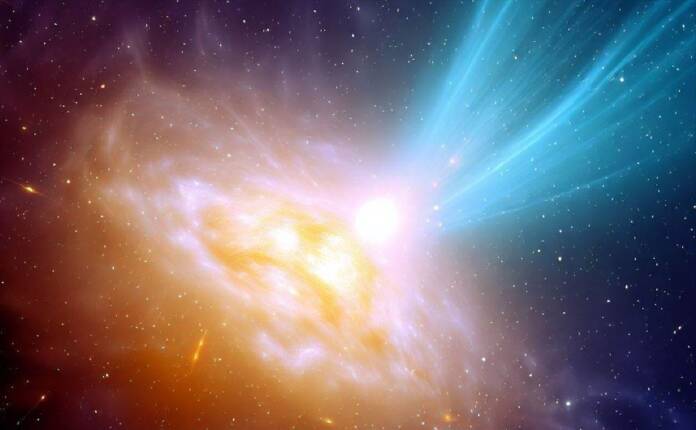I have been waiting for more than 20 years to give this news: it is already known what causes quasars, the brightest objects in the universe.
Its energy is capable of concentrating in a space the size of our solar system the equivalent of a trillion stars. For decades, scientists have tried to unlock the mystery behind its formation, and now a study published in the Monthly Notices of the Royal Astronomical Society reveals the answer.
Origins of Quasars
The Quasars They are the result of the merger of galaxies., a phenomenon that occurs when two galaxies meet and collide. In these cases, the galaxies release enormous amounts of gas, which is absorbed by the supermassive black hole that is in the center of each one of them. The merger of these galaxies allows the black hole to have a quantity of gas to feed on, which causes a very powerful emission of radiation, becoming a quasar. So we can read it at academic.oup.com, where you have more information.
Quasars were discovered more than 60 years ago, but for decades, scientists could not explain how they originated. However, thanks to the observations made by researchers from the Universities of Sheffield and Hertfordshire, it has been possible to determine that the merger of galaxies is the event that produces these enormous power generators.
The researchers analyzed 48 galaxies with quasars and 100 galaxies without quasars, using the Isaac Newton telescope on La Palma. They found that galaxies with quasars were three times more likely to be directly interacting or actively colliding with other galaxies.
Implications for the future of our galaxy
The study presents an interesting perspective on the future of our galaxy. We know that the Milky Way is on a collision course with the Andromeda galaxy, our nearest neighboring galaxy, and if the study is correct, there is a possibility that Sagittarius A*, the supermassive black hole at the heart of the Milky Way, will become a quasar in the process.
While this event won’t happen for another 5 billion years, the study shows how galaxy mergers can have serious long-term consequences. Since quasars are produced by gas rising from the outer parts of the galaxy during a merger, this means there is much less gas left in the galaxy for new star formation, which can stunt galaxy growth for thousands. of millions of years.
The role of quasars in understanding the universe
Quasars play a fundamental role in understanding the history and future of the universe. Scientists’ ability to study quasars and their formation may provide insight into the formation and evolution of galaxies in the early universe.
NASA has announced that its James Webb Space Telescope aims to study the oldest galaxies in the universe, and is capable of detecting light from the most distant quasars, emitted nearly 13 billion years ago. The information gathered through the observation of quasars may be crucial to understanding how the universe formed and how it evolved over time.
Purely illustrative image created with AI














